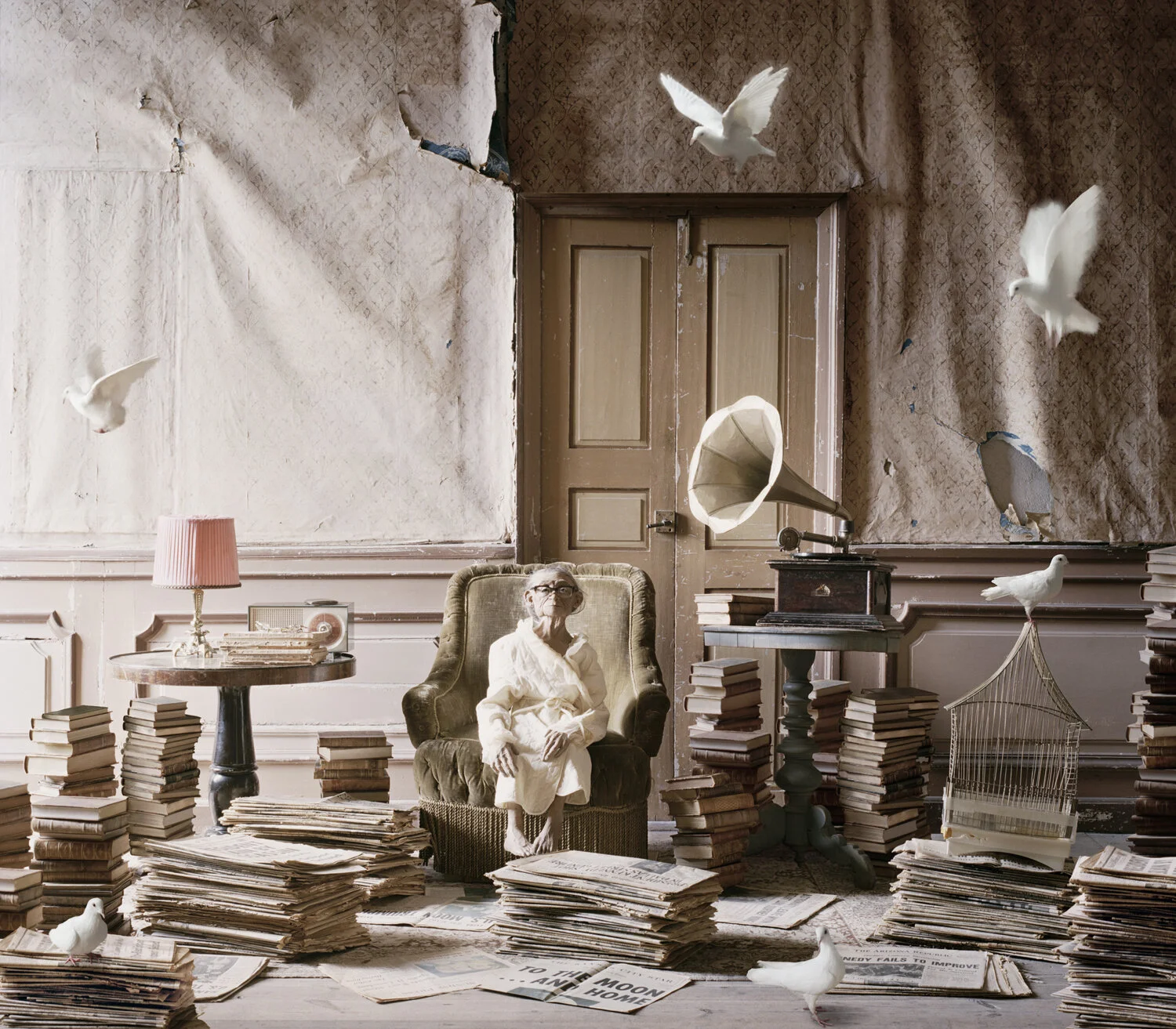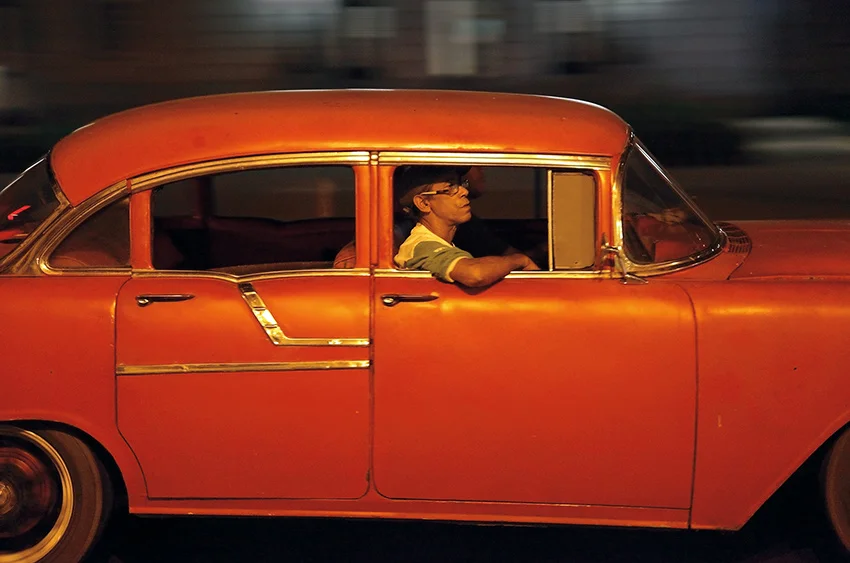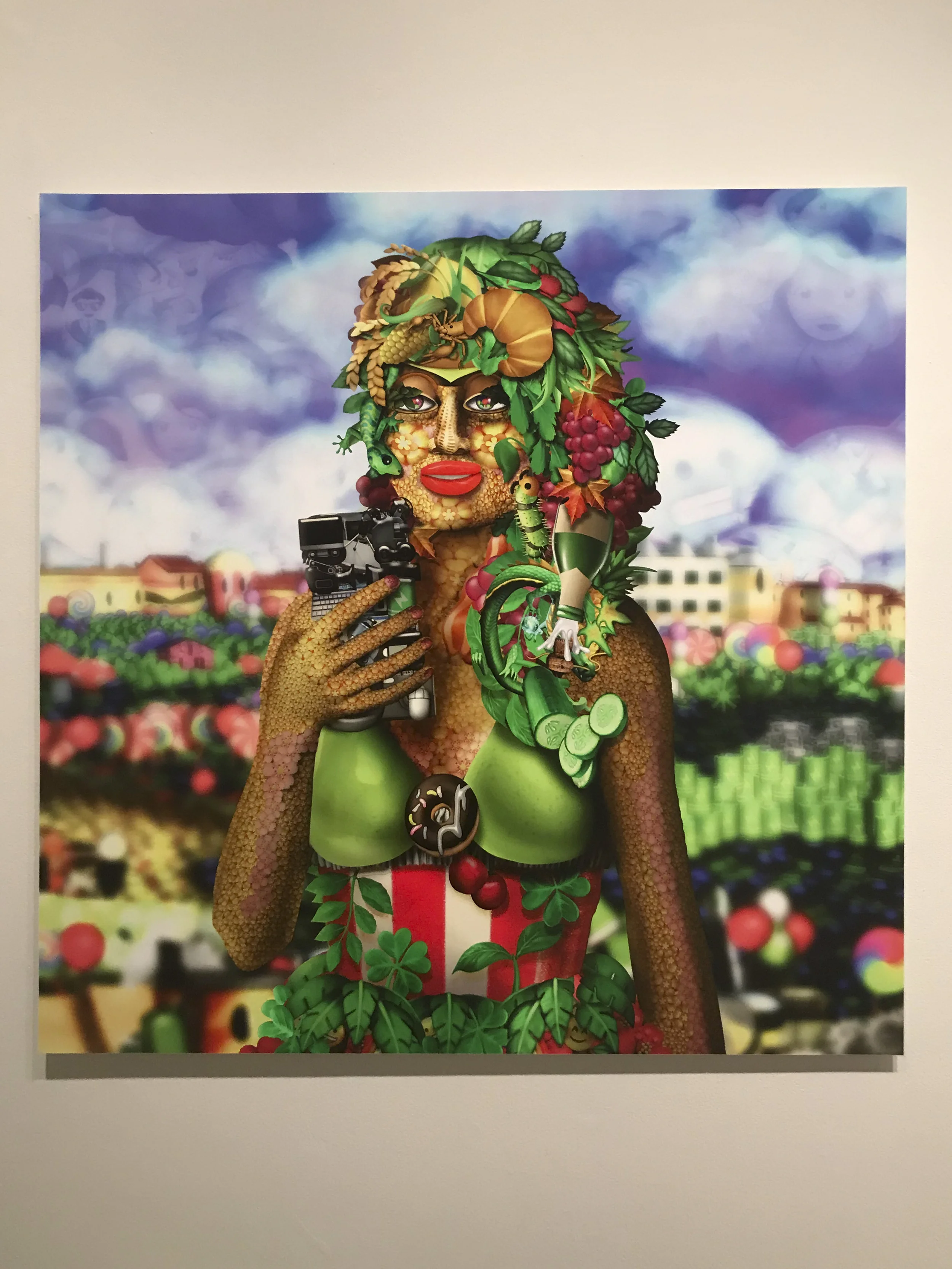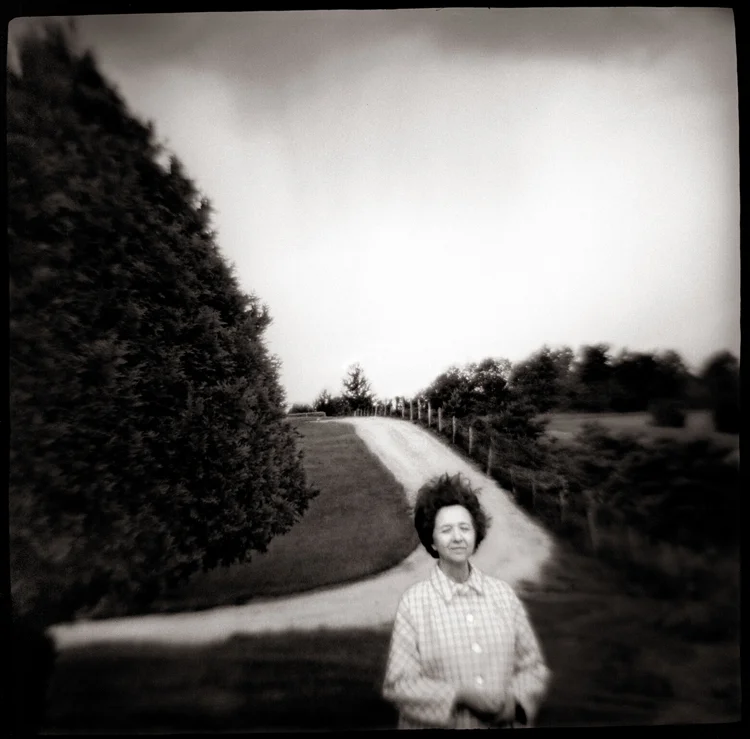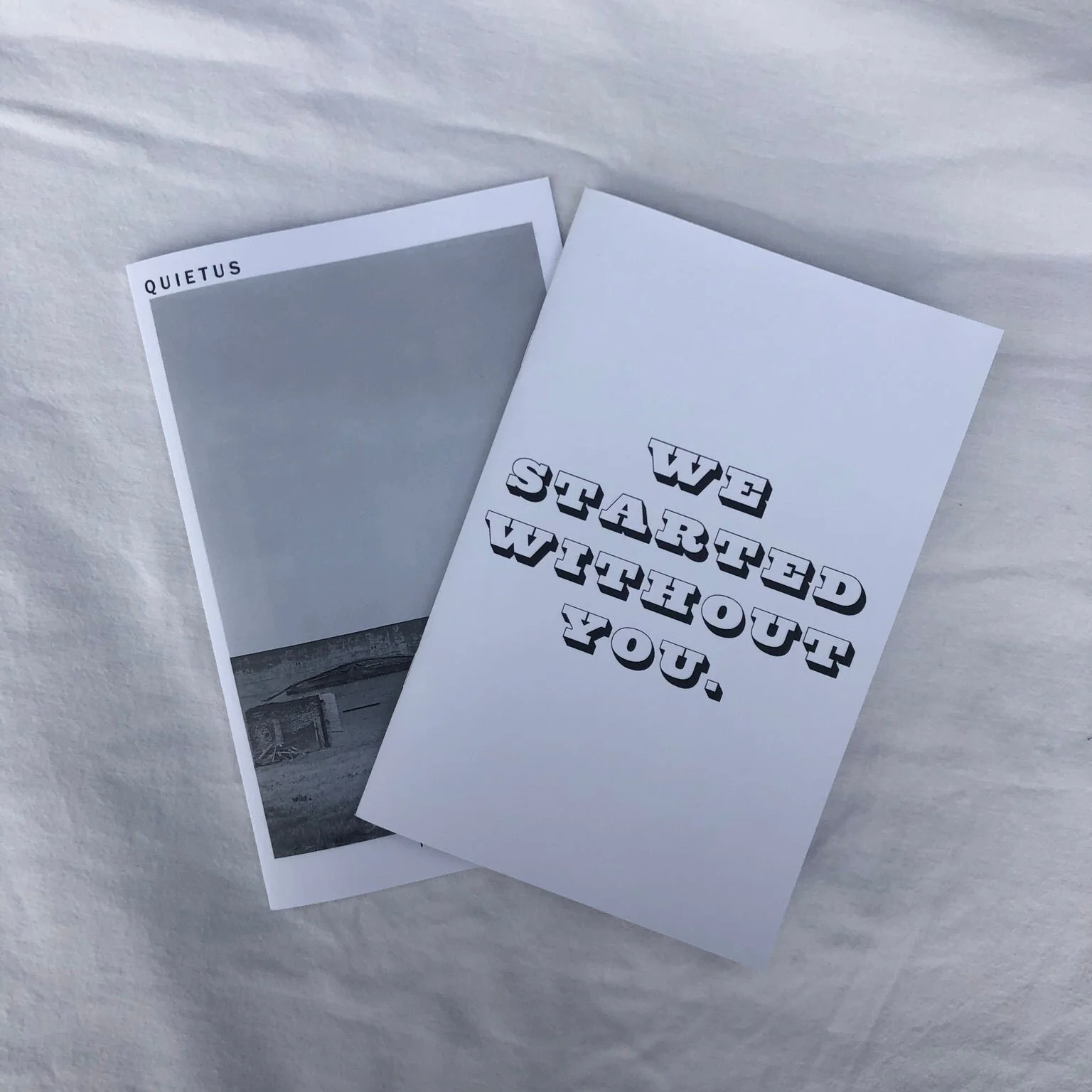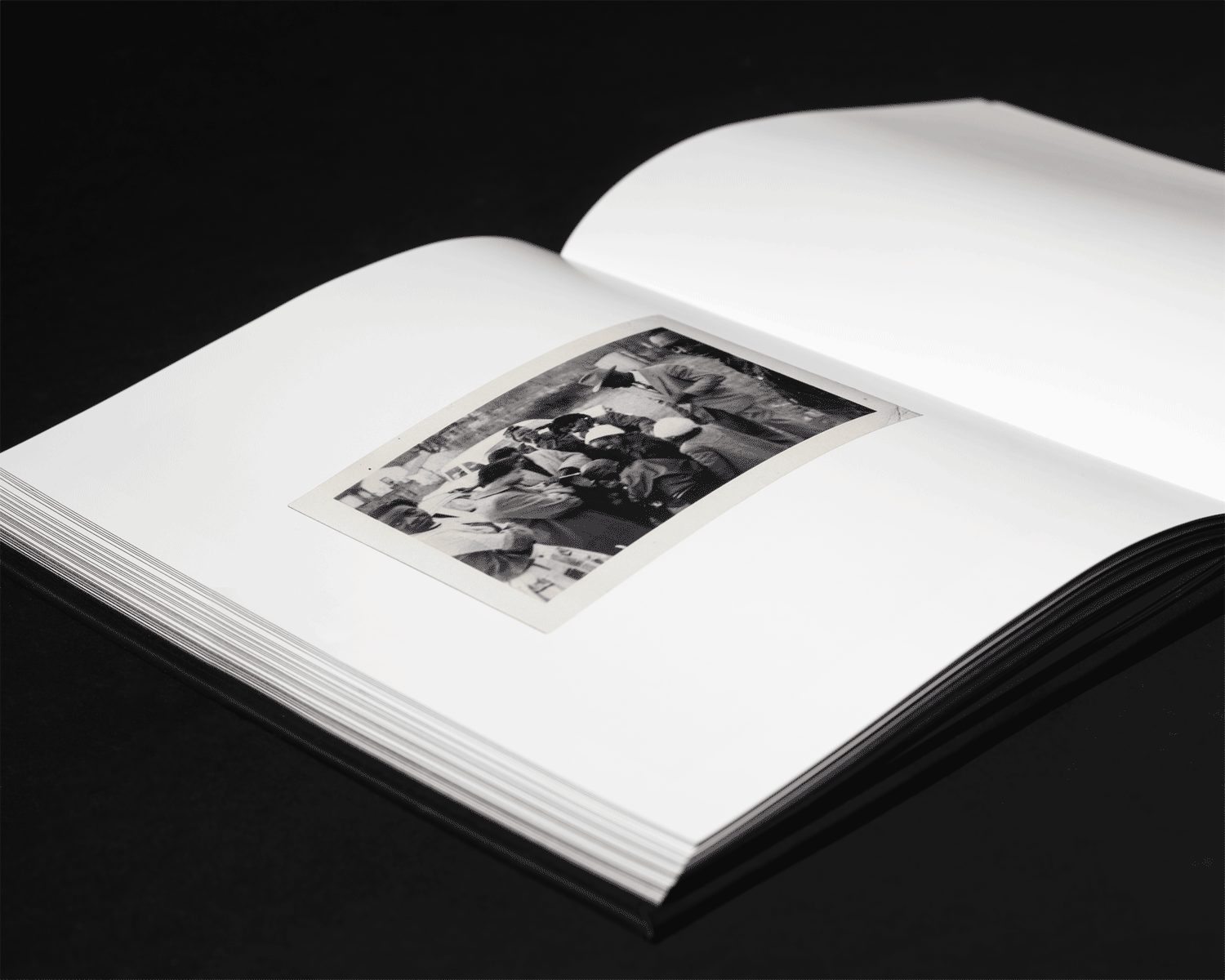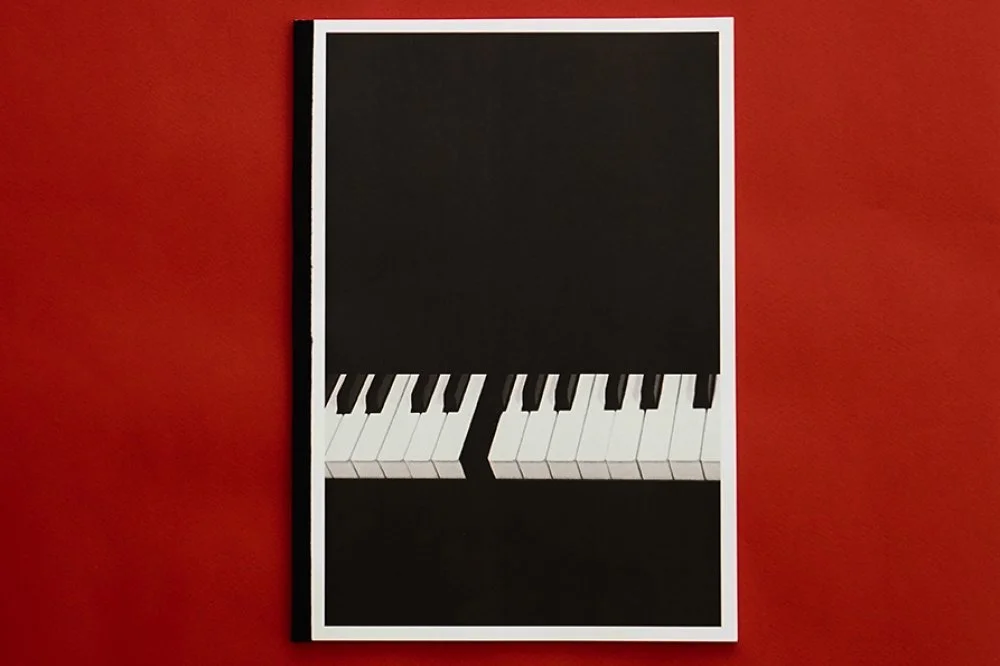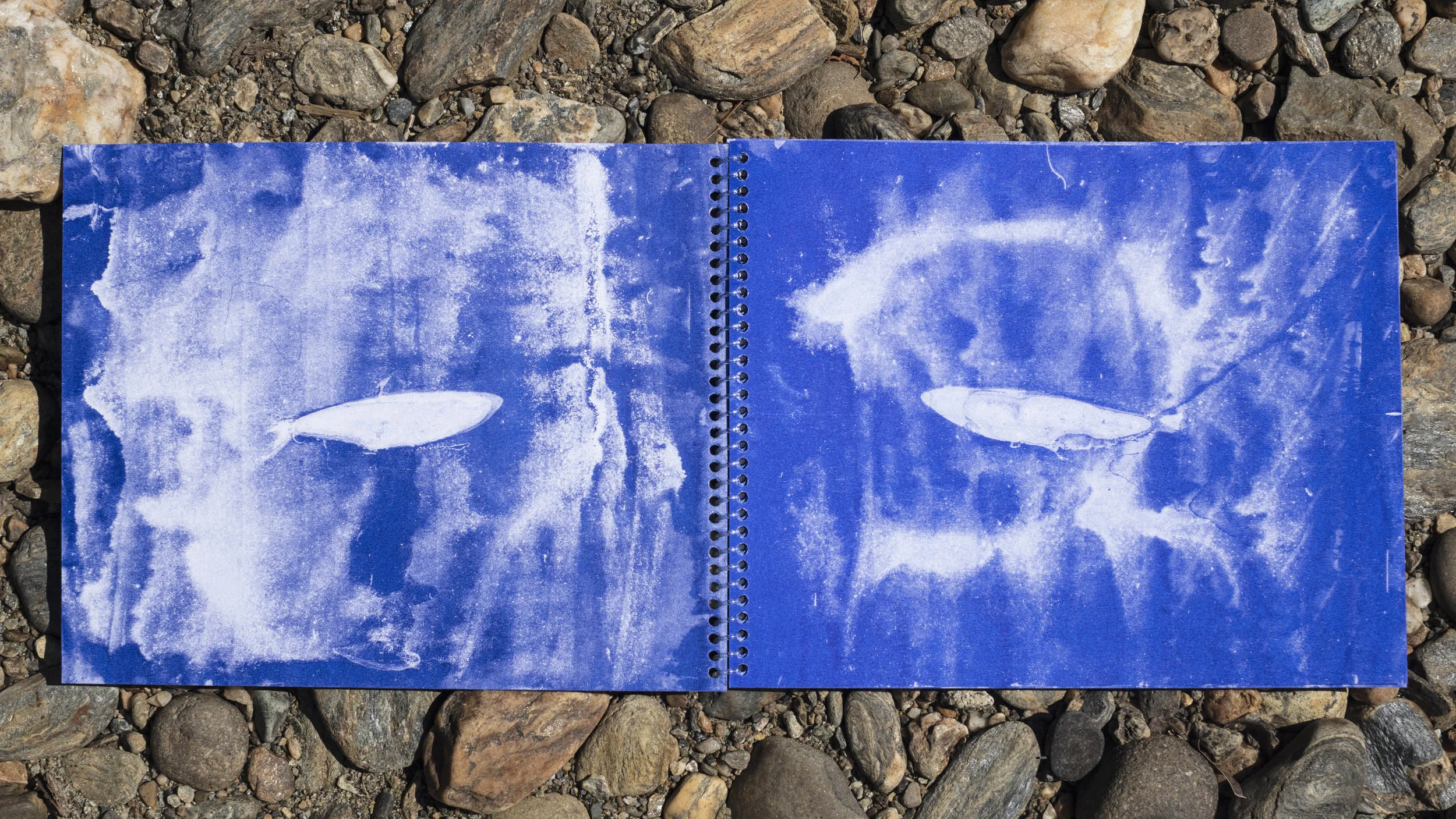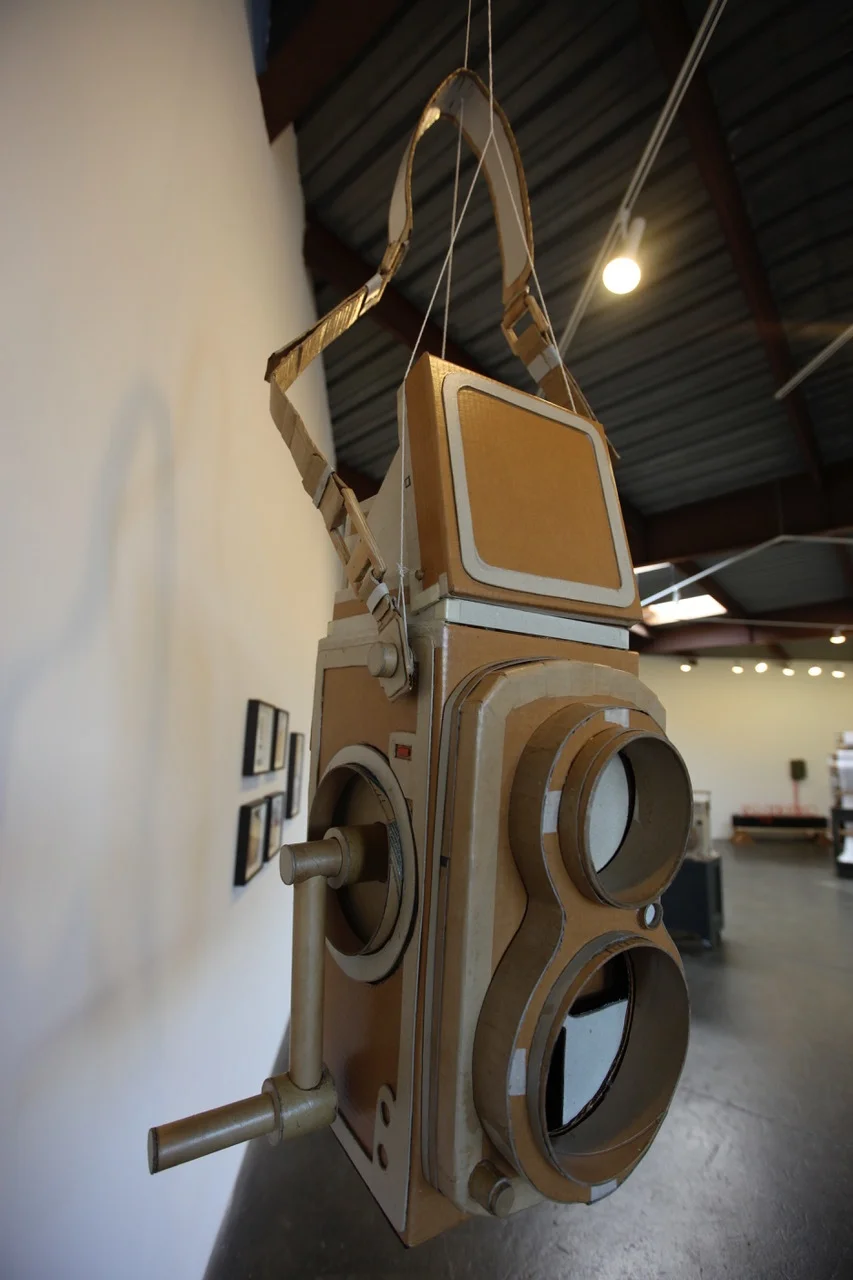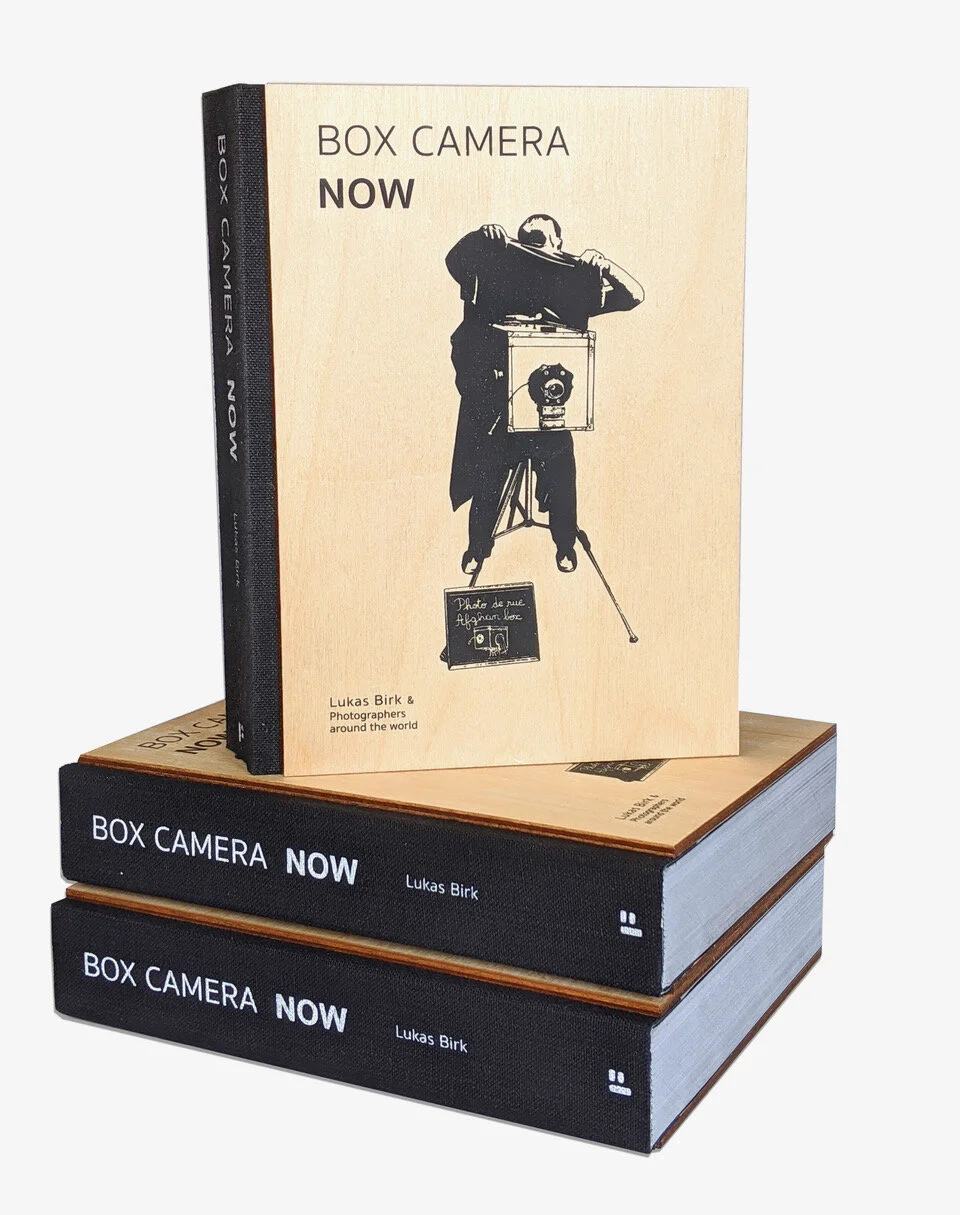This series focuses on those who take the making of pictures a step or two further, creating their own photographic tools.
Internal view from the tri-clops.
Justin Quinnell, Bristol, UK
The words camera obscura often evoke images of dark boxes large enough to stand or sit in where the viewer can enjoy a reversed projection of the outside world. Some camera obscuras are stationary rooms, while others can be moved by trailer to alter the projected view. A frequent inventor of cameras, Justin Quinnell’s new device dubbed the “tri-clops” was created to easily maneuver the camera obscura into a new position for a new image. The result is the world’s first multi-screen, wearable camera obscura.
Constructed from corrugated plastic, a discarded plastic greenhouse, gaffer tape, and lenses from a cheap pair of reading glasses, the whimsically painted eyes around the lenses add to the light-hearted feel that gives the device its name. The lightweight construction and small scale allows adults to wear the camera, albeit not easily, while walking around.
The three lenses allow for simultaneous multiple projections. Inside the tri-clops, the images are presented upsidedown and backwards as they are with any traditional obscura. Unlike the traditional models, the three screens on the left, right, and center substantially increase the wearer’s peripheral vision. The screens are positioned for the viewer to see all three projections from as little as two feet away. Quinnell finds that “a real (obscura) projection is quite overwhelming to anyone used to viewing the world through a digital screen.” The tri-clops travels to art and science festivals throughout the UK hoping to provide a sense of wonder to those who step inside.
The tri-clops camera at a festival.
View more of Quinnell’s work on his website.
Have you made or modified your own photographic equipment? Let us know at info@donttakepictures.com.





































